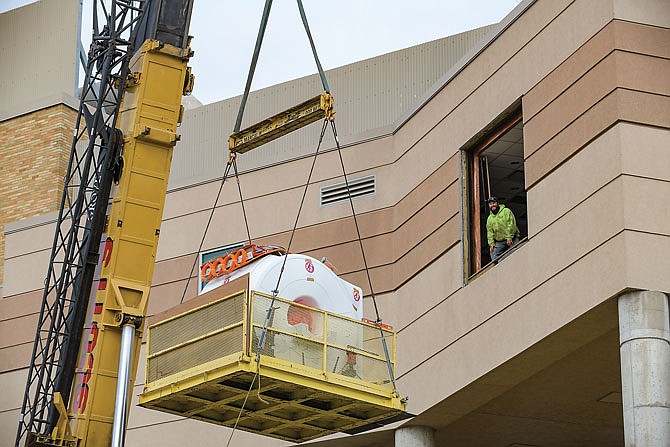Capital Region Medical Center installed a new MRI machine Wednesday.
The MAGNETOM Sola magnetic resonance imaging scanner is the latest in biomatrix technology - it automatically adjusts to variables in different patients, which increases productivity and decreases the number of "rescans" the hospital will require. This improves efficiency and patient satisfaction, according to a CRMC news release.
"The MAGETOM Sola helps healthcare providers perform a full range of routine and complex MRI exams while accelerating work flow and delivering consistent results across all patient types," the release said. "Biomatrix sensors save setup time and inform the correct exam strategy."
Sensors can detect motion created while breathing and compensate for it.
"Motion is a challenge in MRI. It can significantly decrease image quality, limit scan consistency, and lead to costly rescans," said Kristy Trent, CRMC director of radiology. "The new MRI system architecture has biomatrix sensors which capture respiratory, and head motion, which boosts consistency and frees up the technologist to select the optimal exam strategy. This helps to ensure high-quality results."
New software in the MAGNETOM Sola offers faster scanning, which benefits the patients and the hospital.
Technology used in the machine may reduce time required for musculoskeletal scans by 46 percent. Other technologies make cardiac and dynamic liver exams faster, and enable imaging of patients who cannot reliably hold their breath.

